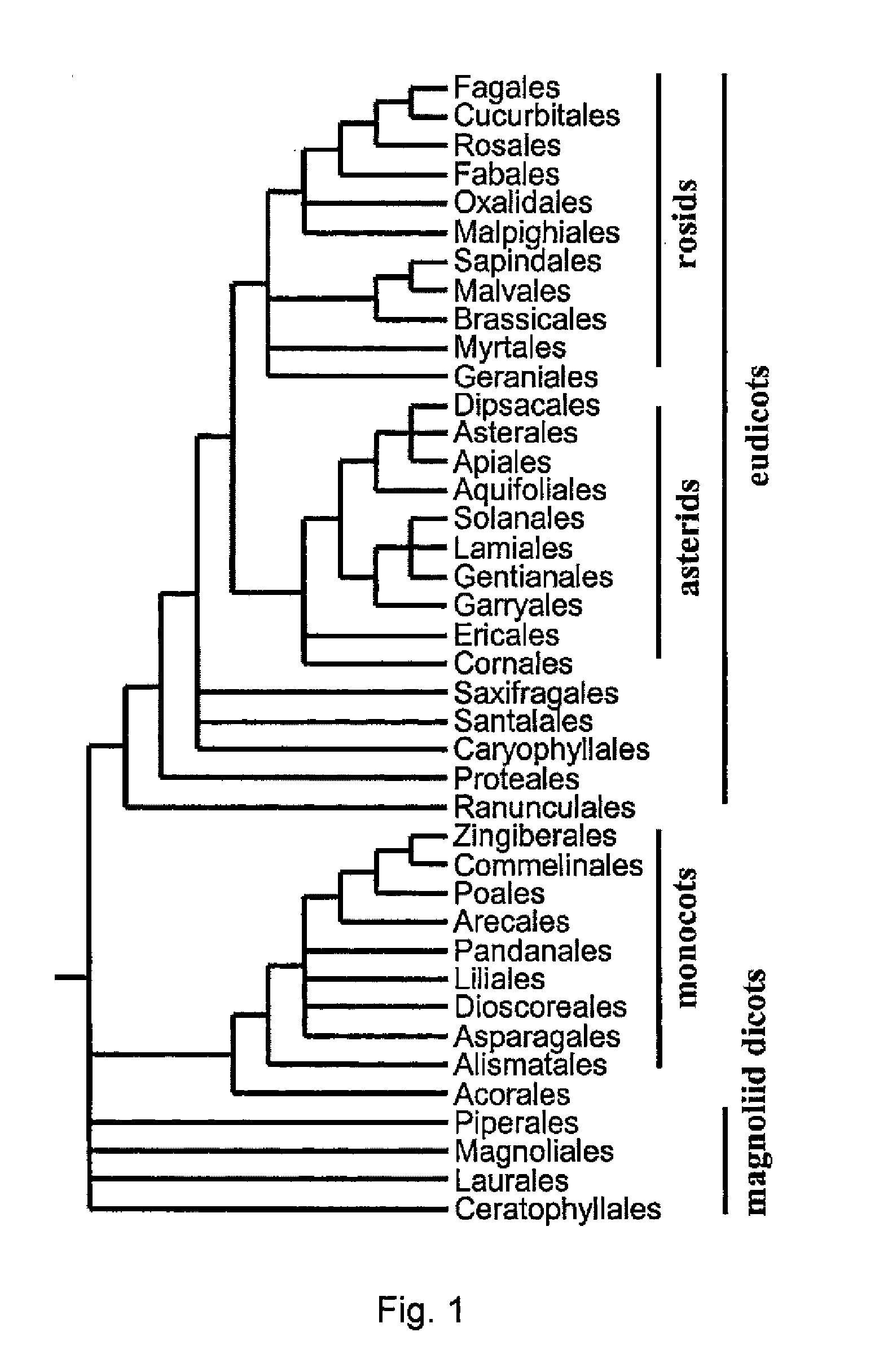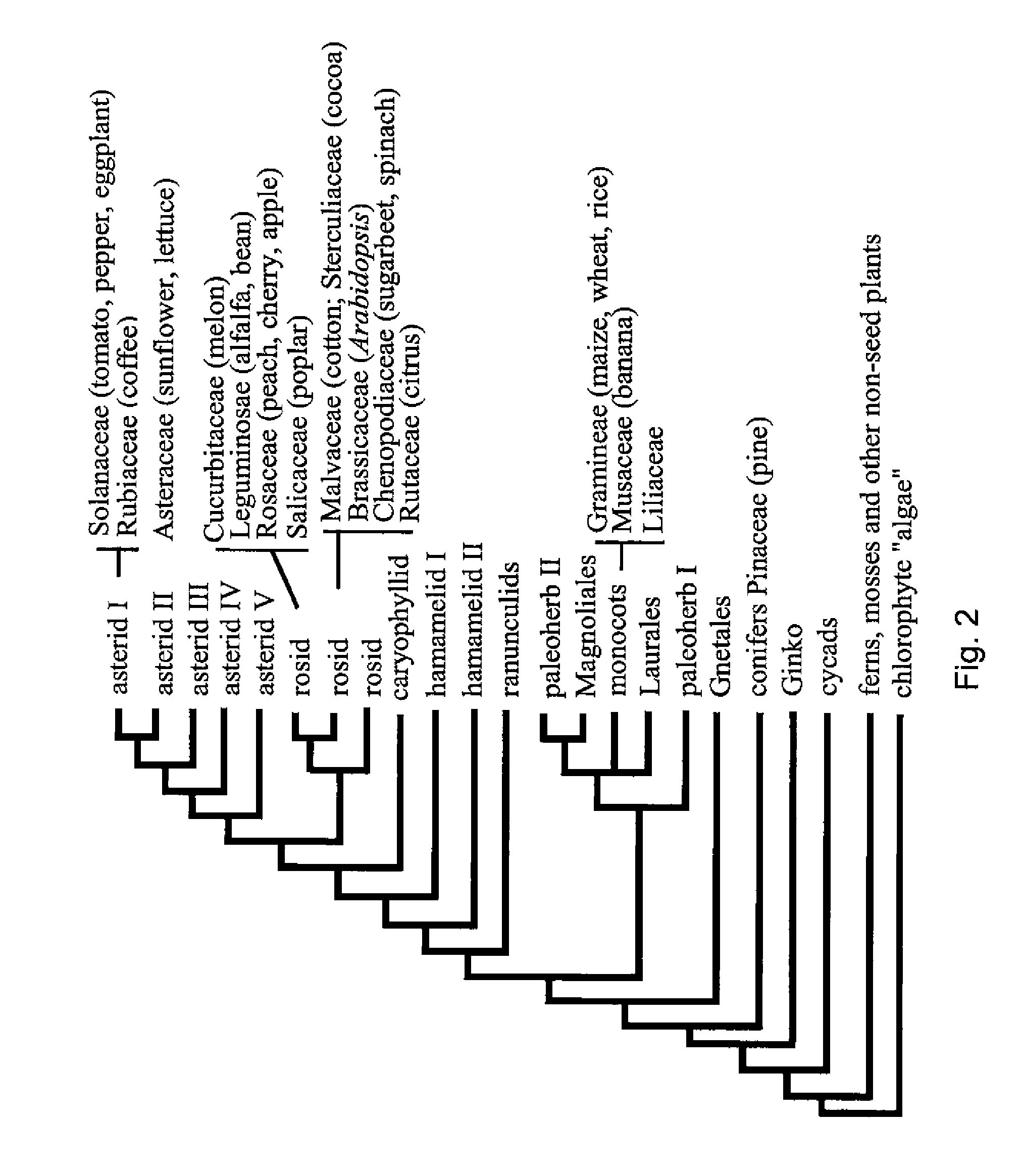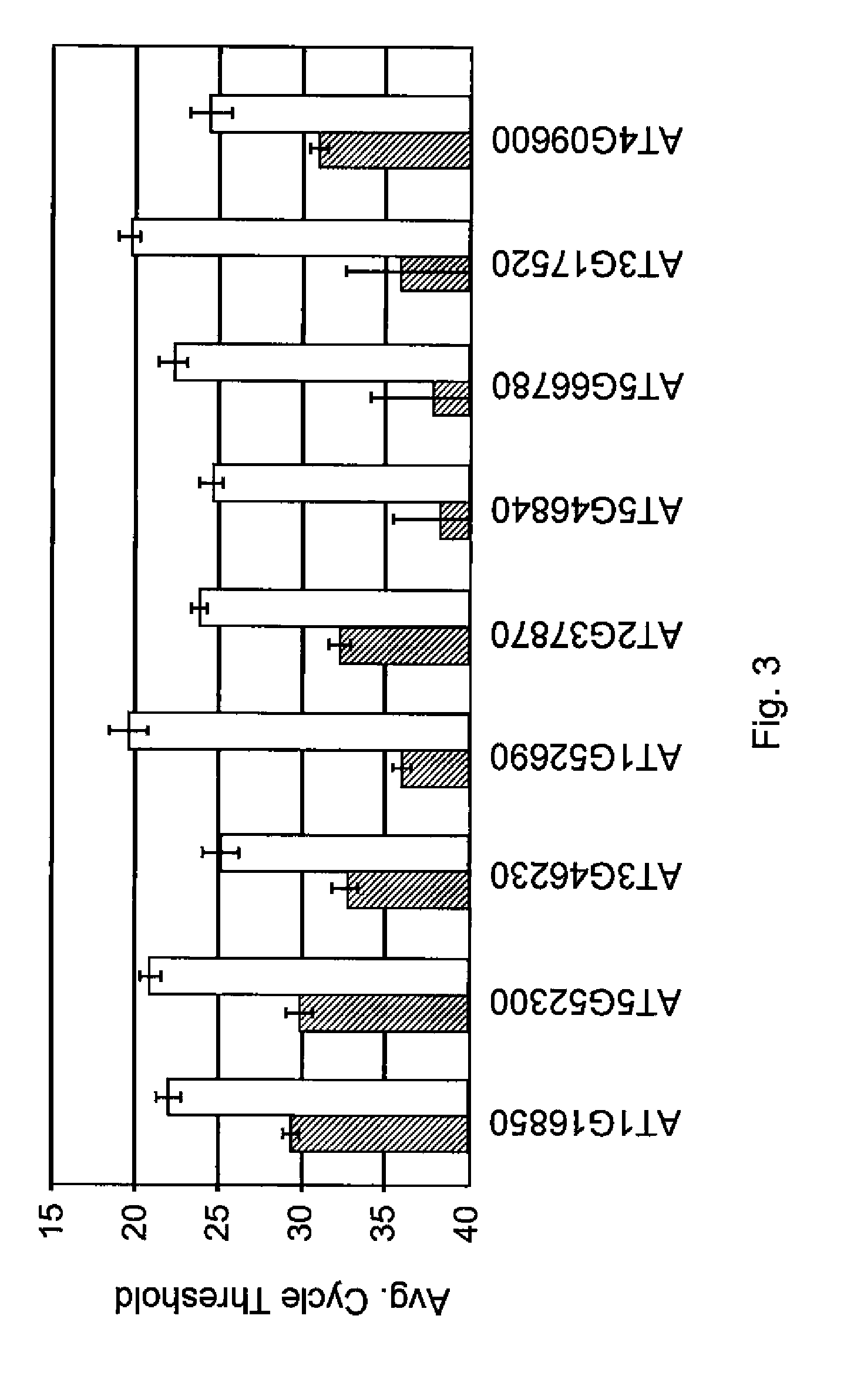Water deficit-inducible promoters
- Summary
- Abstract
- Description
- Claims
- Application Information
AI Technical Summary
Benefits of technology
Problems solved by technology
Method used
Image
Examples
example i
Microarray Time Course Experiments and Selection Criteria
[0063]Candidate drought-inducible promoters were primarily selected based on a drought time course T×P experiment performed. In this experiment, clay pots of well-watered late-rosette stage Arabidopsis plants grown under short day conditions were transferred to absorbent paper, and further watering was withheld during the subsequent drought period. Data were generated for five physiologically determined drought stages: mild stress, moderate stress, severe stress, and two stages after re-watering. The stress state of each plant was determined by measuring physiological indicators of drought, including relative water content, photosynthetic carbon assimilation, as well as ABA and proline levels. Leaf tissue samples during a two week drought period were collected daily, and sample from plants that had similar physiology for each pre-defined state were pooled for microarray analysis. Well-watered controls were also sampled each da...
example ii
Drought-Induction of Native Candidate Promoter Genes
[0065]Drought-inducible promoter candidates were initially identified based on a wild-type baseline drought transcription profile (T×P) experiment. In assessing the effectiveness of drought-inducible-transcription factor combinations, it was essential to ensure that the drought imposed on plants during the water deficit treatment (we used a clay pot, soil-based drought assay) was sufficient to drive inducible gene expression via the promoters in a similar manner as observed in the original drought T×P experiment. The nine endogenous genes in FIG. 3 showed strong induction upon drought treatment. These results confirmed that the clay pot soil-based drought assay was sufficient for water deficit-based induction of promoter candidate genes. Most of these genes are expressed at undetectable or extremely low levels in non-stressed plants. In most cases, however, there is considerably high expression in maturing seeds, due to the drought...
example iii
Preparation of Transgenic Plants
[0067]Promoter cloning. For genes showing appropriate patterns of regulation, approximately 1.2 kb of upstream sequence were cloned by PCR (unless this region contained another gene, in which case the upstream sequence up to the next gene was cloned). Each promoter was cloned into an expression vector (vectors used in this study may include SEQ ID NOs: 10-54, and SEQ ID NO: 10-27, 33-36, 43-45, and 51-54 have been tested in plants) in front of either green fluorescent protein (GFP) or a polynucleotide encoding a transcription factor, such as SEQ ID NOs: 55, 57, 59, 61, or 59, that has been shown to provide increased tolerance to water deficit. In some of these cases, the transcription factors also produce deleterious morphological effects in the plants when they are constitutively overexpressed.
[0068]Transformation. Transformation of Arabidopsis was performed by an Agrobacterium-mediated protocol based on the method of Bechtold and Pelletier (1998) Me...
PUM
 Login to View More
Login to View More Abstract
Description
Claims
Application Information
 Login to View More
Login to View More - Generate Ideas
- Intellectual Property
- Life Sciences
- Materials
- Tech Scout
- Unparalleled Data Quality
- Higher Quality Content
- 60% Fewer Hallucinations
Browse by: Latest US Patents, China's latest patents, Technical Efficacy Thesaurus, Application Domain, Technology Topic, Popular Technical Reports.
© 2025 PatSnap. All rights reserved.Legal|Privacy policy|Modern Slavery Act Transparency Statement|Sitemap|About US| Contact US: help@patsnap.com



